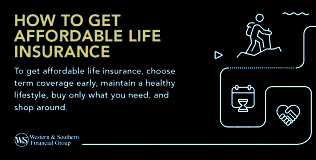Who Has the Cheapest Insurance? A Complete Guide to Affordable Coverage
Introduction

When it comes to protecting your car, home, health, or life, insurance is no longer a luxury—it’s a necessity. But let’s be honest, nobody enjoys paying more than they have to. That’s why the big question always pops up: who has the cheapest insurance? The answer isn’t as simple as pointing to one company, because the cheapest option depends on your needs, location, coverage, and personal situation. Still, by digging deeper and comparing providers, you can save hundreds—or even thousands—of dollars each year.
In this guide, we’ll break down the cheapest insurance companies in different categories, what affects your rates, and how to get the best deal without sacrificing coverage.
Why Insurance Costs Vary So Much
Ever wondered why your friend pays less for car insurance even though you both drive similar vehicles? That’s because insurers look at many factors before deciding your premium. Here are a few key ones:
- Location: Urban areas usually have higher rates than rural areas.
- Age & Driving Record: Younger drivers or those with traffic violations often pay more.
- Credit Score: In many states, your credit can impact your insurance rates.
- Coverage Amount: Higher coverage limits = higher costs.
- Type of Insurance: Health, auto, home, and life insurance each follow different pricing models.
So, when people ask, “Who has the cheapest insurance?”, the answer depends on these variables.
Cheapest Car Insurance Companies in 2025
Car insurance is one of the most searched-for categories when it comes to finding the cheapest coverage. Based on current trends, these companies consistently rank among the most affordable:
- Geico – Known for low rates and easy online tools.
- State Farm – Great for young drivers and students.
- Progressive – Strong discounts for bundling policies.
- USAA – Often the cheapest, but only available for military members and families.
Comparison Table: Cheapest Car Insurance Providers (Average Monthly Costs)
| Insurance Company | Average Monthly Cost | Best For |
|---|---|---|
| Geico | $40 – $55 | Everyday drivers |
| State Farm | $45 – $60 | Students & young drivers |
| Progressive | $50 – $65 | Bundled coverage seekers |
| USAA | $35 – $50 | Military families |
Note: Rates vary by state, age, and driving history.
Who Has the Cheapest Health Insurance?
Health insurance is another essential expense, especially in the U.S. With rising medical costs, finding affordable coverage is more important than ever. Generally, the cheapest health insurance options come through:
- Marketplace Plans (ACA): Depending on your income, you may qualify for subsidies.
- Medicaid: Free or low-cost coverage for those who qualify.
- Short-Term Health Insurance: Temporary but cheaper than traditional plans.
- Kaiser Permanente & Blue Cross Blue Shield: Often provide affordable marketplace options in certain states.
If you’re young and healthy, a high-deductible plan with an HSA (Health Savings Account) may be the cheapest route. Families, on the other hand, may find better value in mid-tier silver plans.
Cheapest Home Insurance Providers
Protecting your home doesn’t have to break the bank. The cheapest home insurance often comes from companies that balance affordability with reliable coverage. In 2025, the most affordable options typically include:
- Allstate – Strong discounts for bundling home and auto.
- State Farm – Affordable coverage nationwide.
- Farmers Insurance – Great for homeowners who want flexible policies.
- Liberty Mutual – Offers competitive pricing in many states.
Pro tip: Installing security systems or updating your roof can lower your premiums.
Cheapest Life Insurance Companies
Life insurance is one of those policies people often put off, but it can be surprisingly cheap if you buy early. Term life insurance tends to be the most affordable. The following companies are known for low-cost life insurance in 2025:
- Haven Life – Simple online application and low rates.
- Banner Life – Affordable term policies.
- Protective Life – Known for long-term affordability.
- Mutual of Omaha – Great for seniors looking for final expense coverage.
For a 30-year-old non-smoker, a $250,000 term policy can cost as little as $15–$20 per month.
Tips to Get the Cheapest Insurance Rates
Even if you’ve picked the right company, there are extra steps to lower your premiums. Here are a few tried-and-true strategies:
- Bundle Policies – Combine auto, home, or renters insurance with one provider.
- Improve Your Credit Score – A higher score often means lower rates.
- Raise Deductibles – Higher deductibles = lower monthly premiums.
- Shop Around Regularly – Rates change; compare every 6–12 months.
- Ask About Discounts – Safe driver, student, senior, or loyalty discounts add up.
FAQs About the Cheapest Insurance
1. Which company has the absolute cheapest insurance?
It depends on the type. Geico and USAA often lead for auto, while Medicaid is cheapest for health, and Haven Life for term life.
2. Is cheap insurance always better?
Not necessarily. Low cost shouldn’t mean poor coverage. Always balance price with benefits.
3. How often should I compare insurance quotes?
At least once a year, or whenever your life situation changes (moving, new car, new home, etc.).
4. Can bundling really save money?
Yes, bundling home and auto can cut costs by 10–25% in many cases.
Final Thoughts
So, who has the cheapest insurance? The short answer: there’s no single winner for everyone. For auto, companies like Geico, State Farm, Progressive, and USAA usually lead the pack. For health, marketplace subsidies, Medicaid, and providers like Kaiser are often most affordable. Homeowners might lean toward State Farm, Allstate, or Liberty Mutual, while life insurance seekers can find deals with Haven Life or Banner Life.
The key takeaway? Don’t settle for the first quote you get. Compare, bundle, and explore discounts. With the right approach, you can secure reliable coverage without draining your wallet.